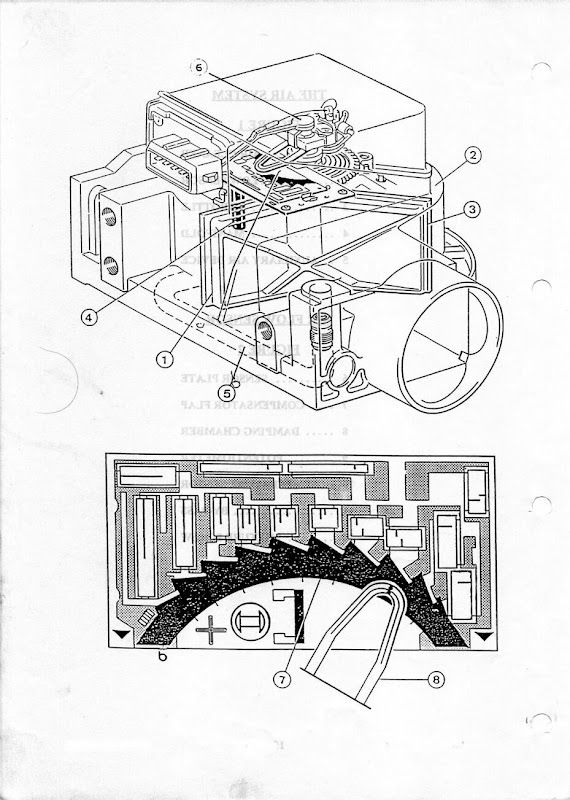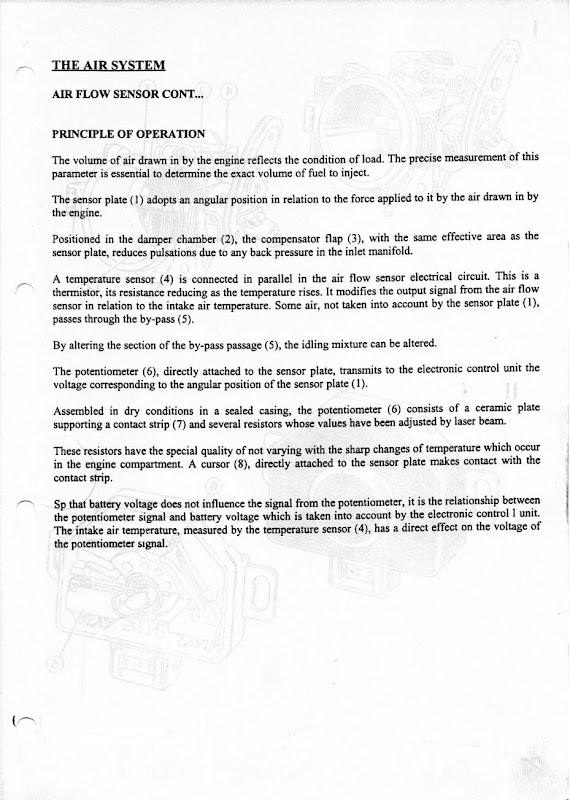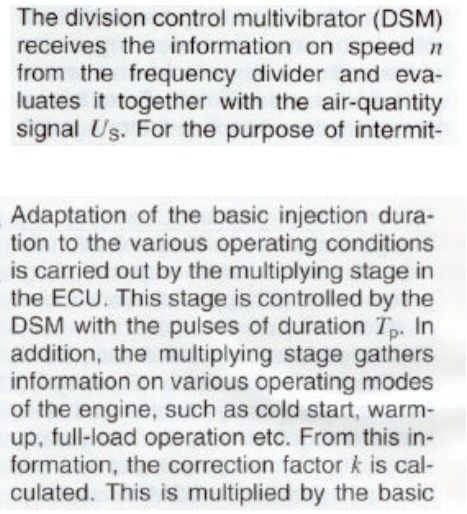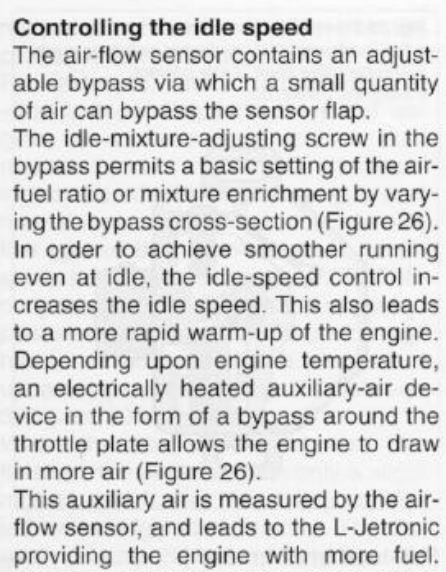
This is my balancing rig. One bottle is connected to the cylinder with the vacuum line to the fuel pressure regulator. That becomes my "standard", and the others are synchronized, one at a time, to it. I have the screw on the "standard" throttle body set 1 1/2 turns from lightly bottomed.
The rig works by fluid flow from one bottle to the one with a higher vacuum. I adjust the throttle body idle air screw so there is no fluid level change in the bottles. I can set the balance so the level stays put for over a minute of idling with absolutely no change.
About the base setting of the "standard" throttle body, there is no specification that I can find as to how it should be set. I set mine at 1 1/2 turns because that is pretty much the universal setting for idle air screws on carburetors.
I guess, if you want to take the time, you could adjust the idle screws by doing idle speed plug readings. I do know that at 1 1/2 turns my plugs usually look a bit richer than I like, but since the bike idles nicely I can't be bothered to tweak it further.
You didn't mention how aggressively you were riding(rpm, speed). I have a total of 60,000 miles on three different bricks, and in my experience, fuel consumption on the RT/LT rises rather dramatically at speeds above 75mph. My daily commute is 55 miles at speeds between 65 and 75mph. This riding gets a very consistent 43-45 mpg. Running around town and on the local country roads at 45-55mph gets about 45-48 mpg. As mentioned, hauling ass on the interstate or very rural roads running at averages of 80+mph knocks fuel efficiency down to 38-40mpg.
Also, I have found that the panniers are a part of the bike's aerodynamics and that leaving them off causes the bike to lose 1-1 1/2 mpg. Tire pressure is important too. I would guess that almost everyone here inflates to 38psi front and 42 rear. Lower pressures will also cost a bit in gas mileage.
Have you run any injector cleaner through the fuel system? If the bike has been stored for any length of time there is probably a bit of varnish in the injectors that can feasibly keep them from shutting off fully allowing them to leak a little additional fuel into the engine. I run Chevron Techron, a half bottle to a tank of fuel for at least the first 1,000 miles when I get a bike, and then again for the first fresh tank of fuel in the Spring. It may be placebo effect, but my bikes seem to like it.


 Throttle syncing, accounting for slackness Thu Apr 21, 2016 6:57 am
Throttle syncing, accounting for slackness Thu Apr 21, 2016 6:57 am





















